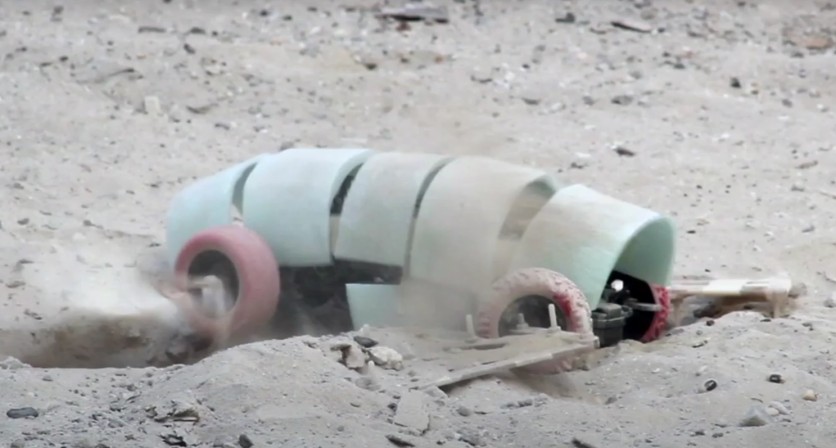Wall-E, a popular robot from a Pixar film named after itself, has been brought to life by the scientists following the creation of a seed planting robot. The A'seedbot could wander around a desert to look for fertile lands.
After finding one, it would send a report to the researchers about its discovery. The autonomous bot could now transform a once-abandoned area into a workable landscape ideal for farming.
Seed-Planting Robot or Wall-E?

The Dubai Institute of Design and Innovation graduate Mazyar Etehadi created this robot farmer. It was a part of his graduation project in line with the Global Grad Show. This event exposes more solutions that tackle the modern issues connected to the environment and society.
As part of the Dubai Design Week, the MENA (the Middle East and North Africa) portion remained as an in-person program. Moreover, out of 150 shortlisted entries from various specializations, Etehadi's project was selected for this event.
In an interview with CNN, Etehadi said that he wished to see more plants and more greenery out there. The fresh graduate added that the continuous desertification led him to develop a seed-planting robot. Later, he arrived at an innovative solution that would require less human participation.
Related Article : Humanoid Robot Ameca Could Perfectly Mimick Human-like Facial Expressions But Can it Walk or Run?
A'Seedbot in Desert Farming
According to the latest report from Interesting Engineering, the farmer robot carries solar panels that can be charged even at night or day. In addition, the length of A'seedbot is estimated to be 20cm long, and it could move within a 5km radius.
Etihad said that it is 3D-printed legs that can travel in sandy areas to seek appropriate moisture levels. This would be a hint for the robot to plant a seed.
Moreover, a distance sensor helps the machine relay reports to the communicating user. The receiver, on the other side can use the sent data for further research. To add, it has a built-in collision avoidance to help the robot for easy soil detection.
"I think it was an easy solution to come up with, but no one ha(d) actually come up with it," Etehadi said.
He continued that farmers, citizens, farming industries, and the government will benefit from the seed-planting robots.
Environment-Conscious Robots
In the same report, Canadian startup Flash Forests developed little drones that drop seeds ten times quicker than a worker using a shovel. The Toronto startup is planning that by 2028, one billion trees have been planted in an area.
Regarding these environment-friendly robots, Tadeu Caravieri of Global Grad Show told CNN that these creations would continue to appear in future programs. He believes that these robots will have a "bigger impact" on the applications.
In another report from Yanko Design, the year of AI has clearly advanced in today's world because of many innovative robot designs. The list includes Tokyo 2021 Olympics robot,Nybble, the Hexapod Pro, the Pankraz Piktograph, and more.
Meanwhile, Tech Times wrote in its previous report that there was a swimming robot that could get rid of pollutants from the water. Another story in September said that patrolling robots were using 360-degree cameras to survey an area in Singapore.
This article is owned by Tech Times
Written by Joseph Henry
ⓒ 2025 TECHTIMES.com All rights reserved. Do not reproduce without permission.




